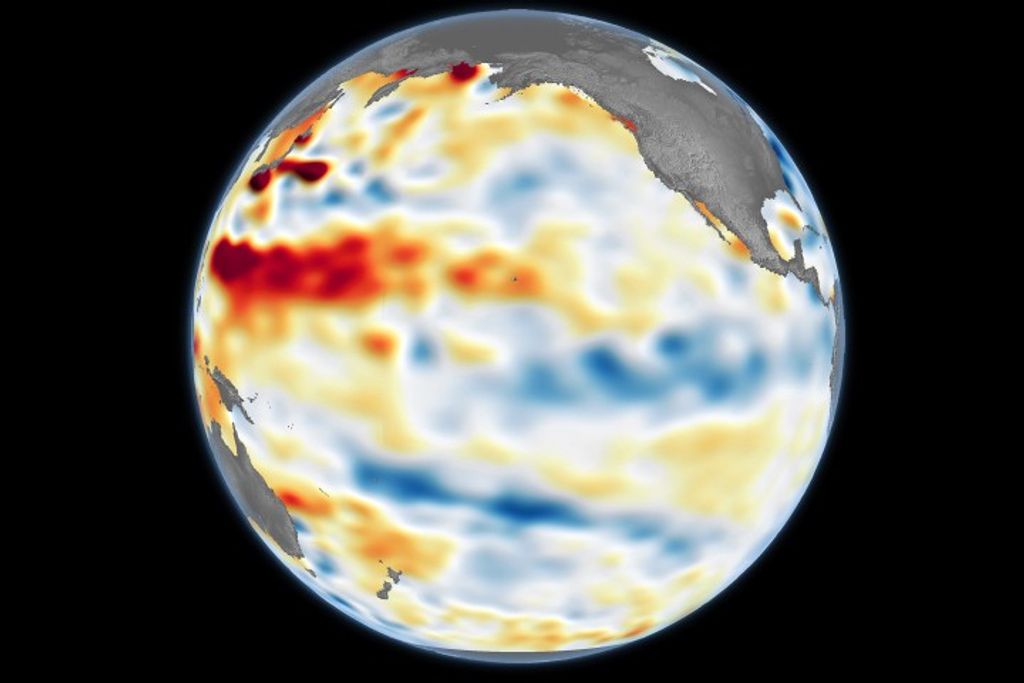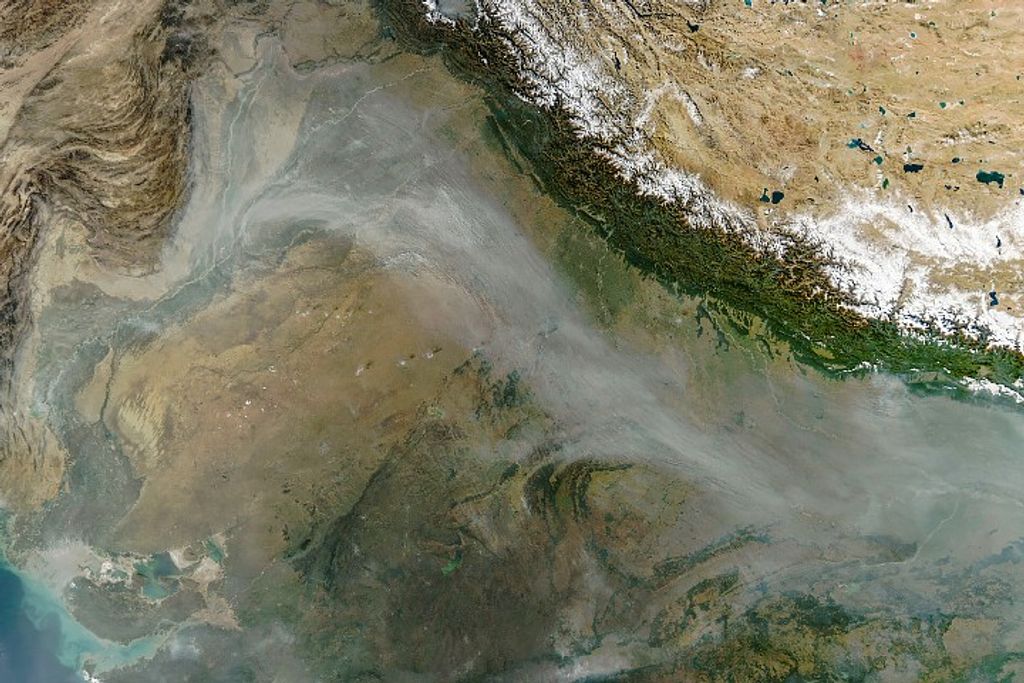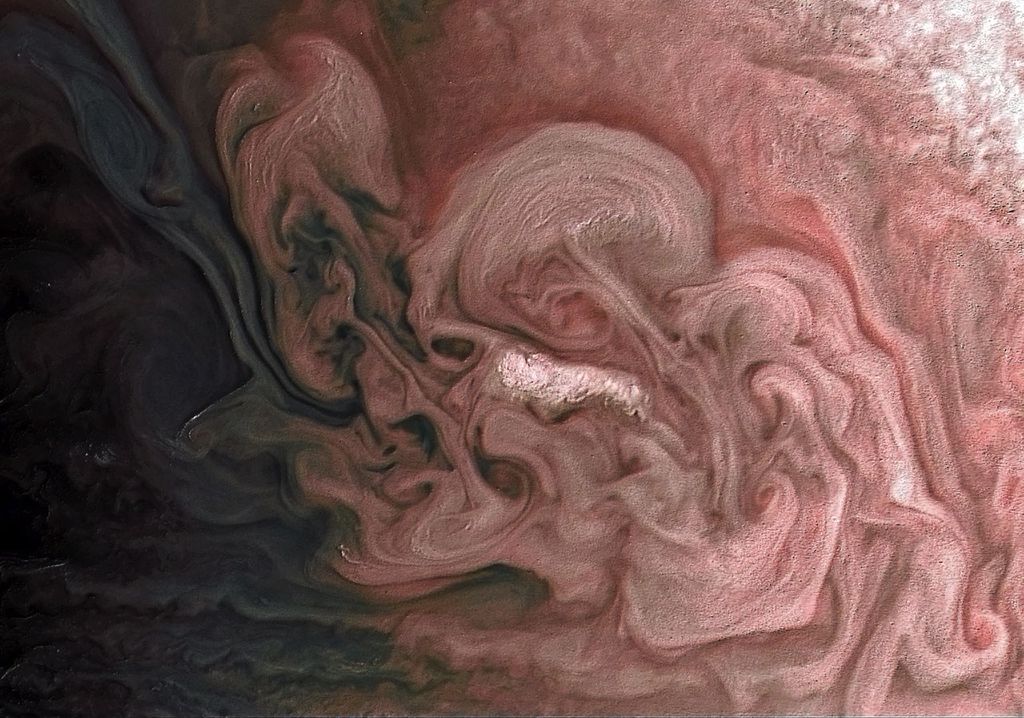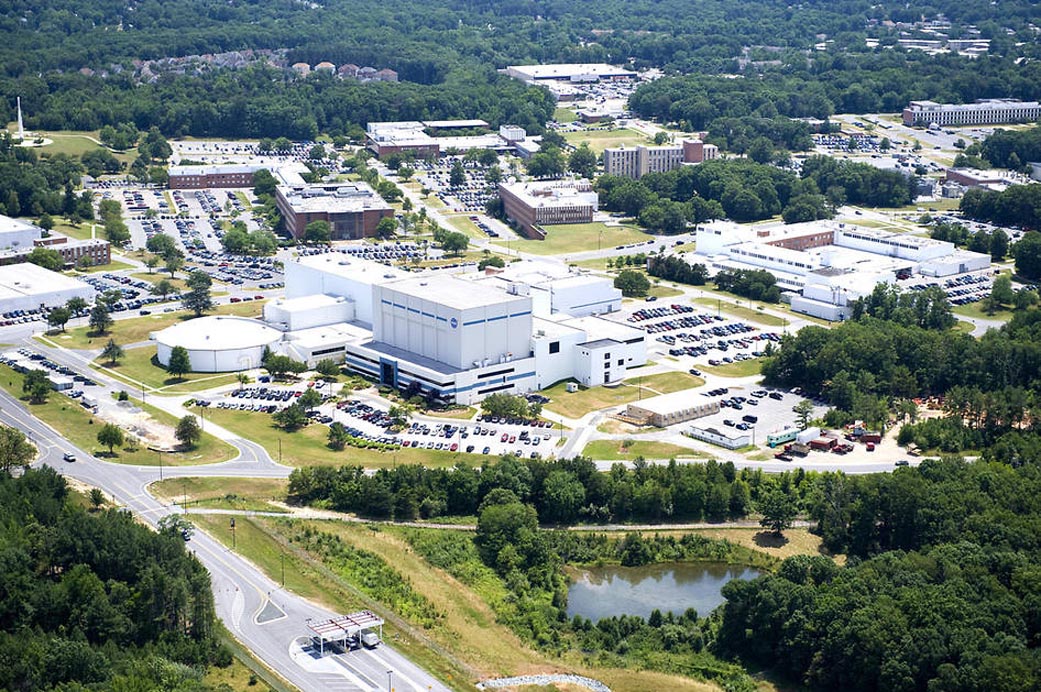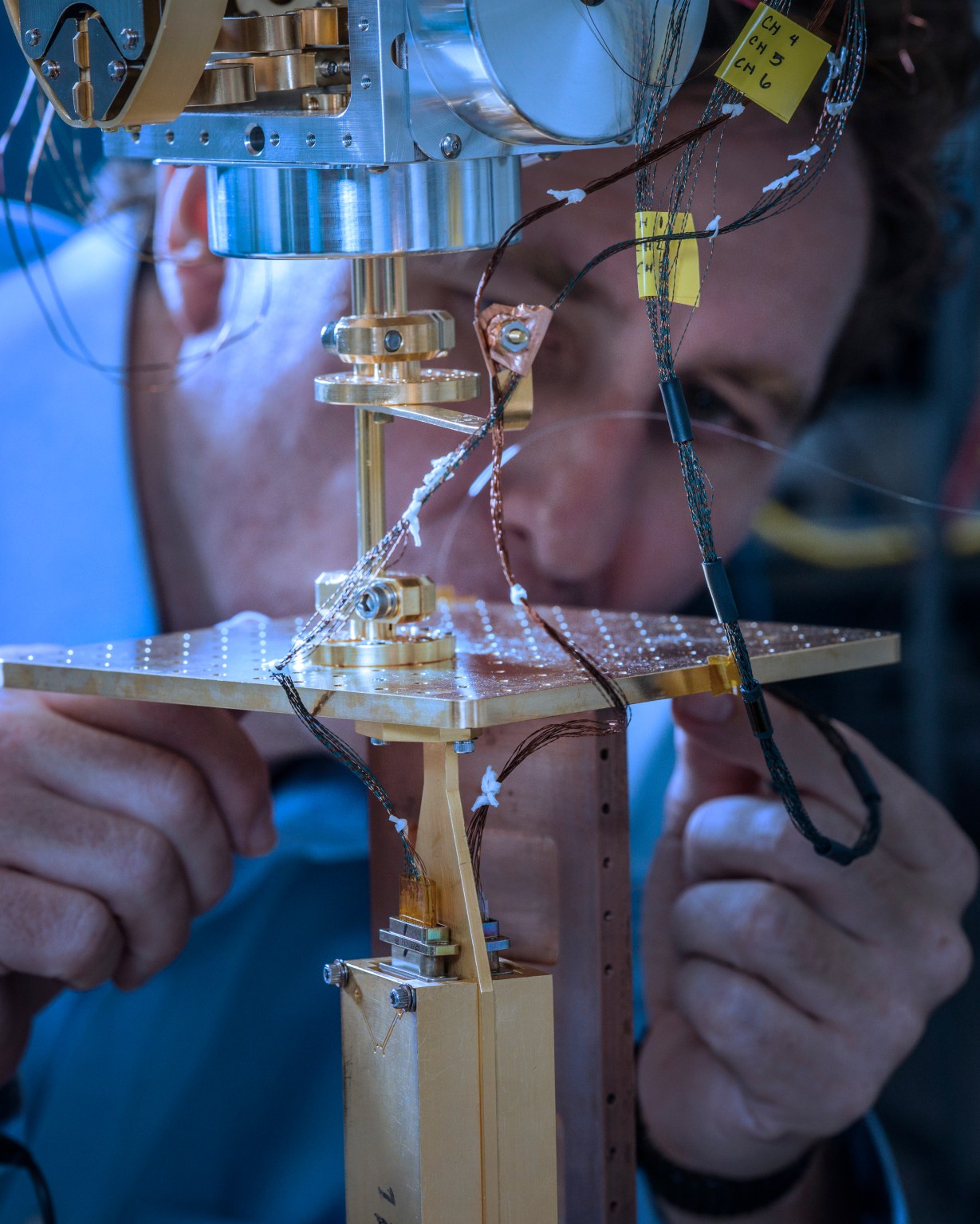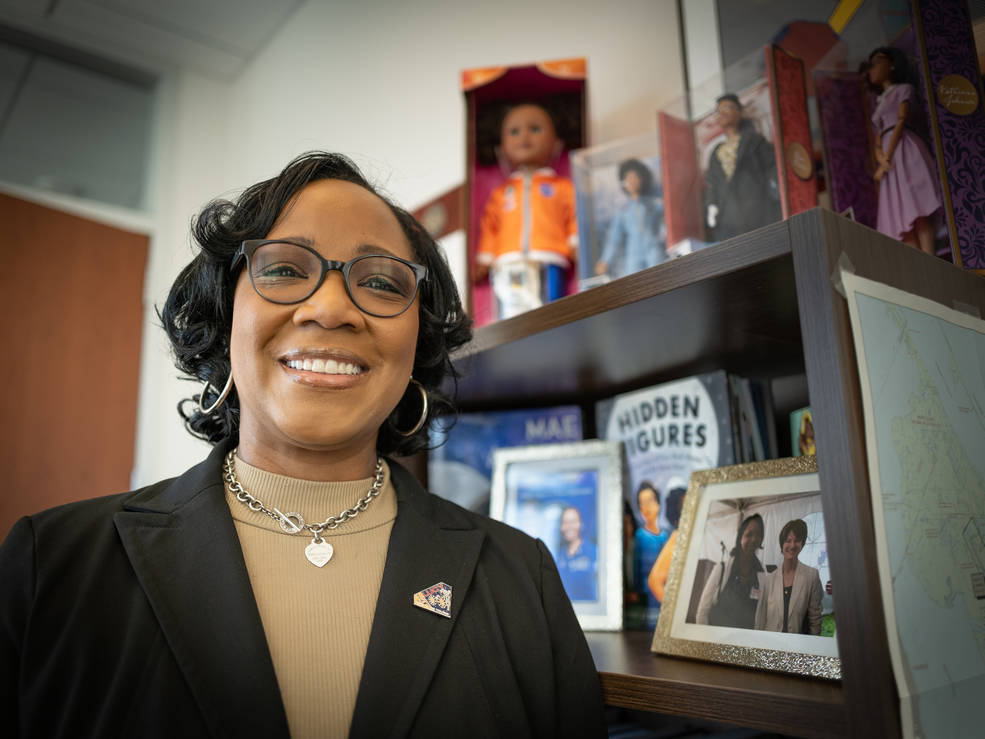Immersive technologies such as virtual reality offer NASA new ways to design missions, interpret data, and even train explorers. NASA’s Goddard Space Flight Center in Greenbelt, Maryland, hosted a technology showcase on July 12 to broaden awareness among mission leaders about these emerging metaverse capabilities.
Alongside NASA projects, industry leaders in virtual and augmented reality (VR and AR) brought a dazzling array of cameras, headsets, and presentation technologies to Goddard’s first ICon (short for “Innovation Connection”) Hub Technology Showcase.
Goddard’s own Mixed Reality Exploration Toolkit (MRET) development team showed what is available for mission leadership and engineers today and explored the possibilities for tomorrow.
“The ICon Hub vision is a collaborative, innovation culture that routinely overcomes the constraints of impossibilities and has no fear of failure,” said Goddard’s Deputy Director for the Engineering and Technology Directorate, Joanne Hill-Kittle. “Our goal of rapidly securing a path to mainstream mission adoption of new technologies synergizes with the immersive capabilities we saw here this week.”
Goddard technologist Thomas Grubb has made virtual worlds available to NASA scientists and innovators for years through the MRET AR/VR toolkit (pronounced “merit”). Grub’s team at Goddard developed MRET into an agency platform for training, visualization, and mission engineering. His team continues developing capabilities such as providing scientists with new depth and animation of science data visualizations and increasing safety and efficiency of NASA personnel and assets working around flight hardware.
“For complex, spatially related problems,” Grubb explained, “being able to use our binocular vision makes a huge difference.”
Virtual collaborations through secure networks with other NASA centers, universities and government agencies are becoming a critical MRET feature for the agency, Grubb said. Missions including the Roman Space Telescope and On-Orbit Servicing Assembly and Manufacturing (OSAM-1) have used this virtual environment to assess designs before construction or during integration and testing.
Scientists have visualized large data sets, including efforts to understand the origins of star clusters, within these immersive visualization environments. The team is working to integrate extended reality and Earth systems modeling so scientists can interact with extreme weather and environmental events.
“The Canadian wildfires have been a big deal this summer,” Grubb said. “We have these smoke plumes that punched through layers of the atmosphere and moved around the world. We’re using modeling to see where they’re going to go over time.”
In addition to putting on VR headsets and interacting with worlds of data or blown-up spacecraft structures, guests could step into a ring of cameras and see themselves as a hologram on their phone or projected into an AR headset display. Another AR headset provided a taste of virtual presence, working with a remote partner or sharing 3D schematics.
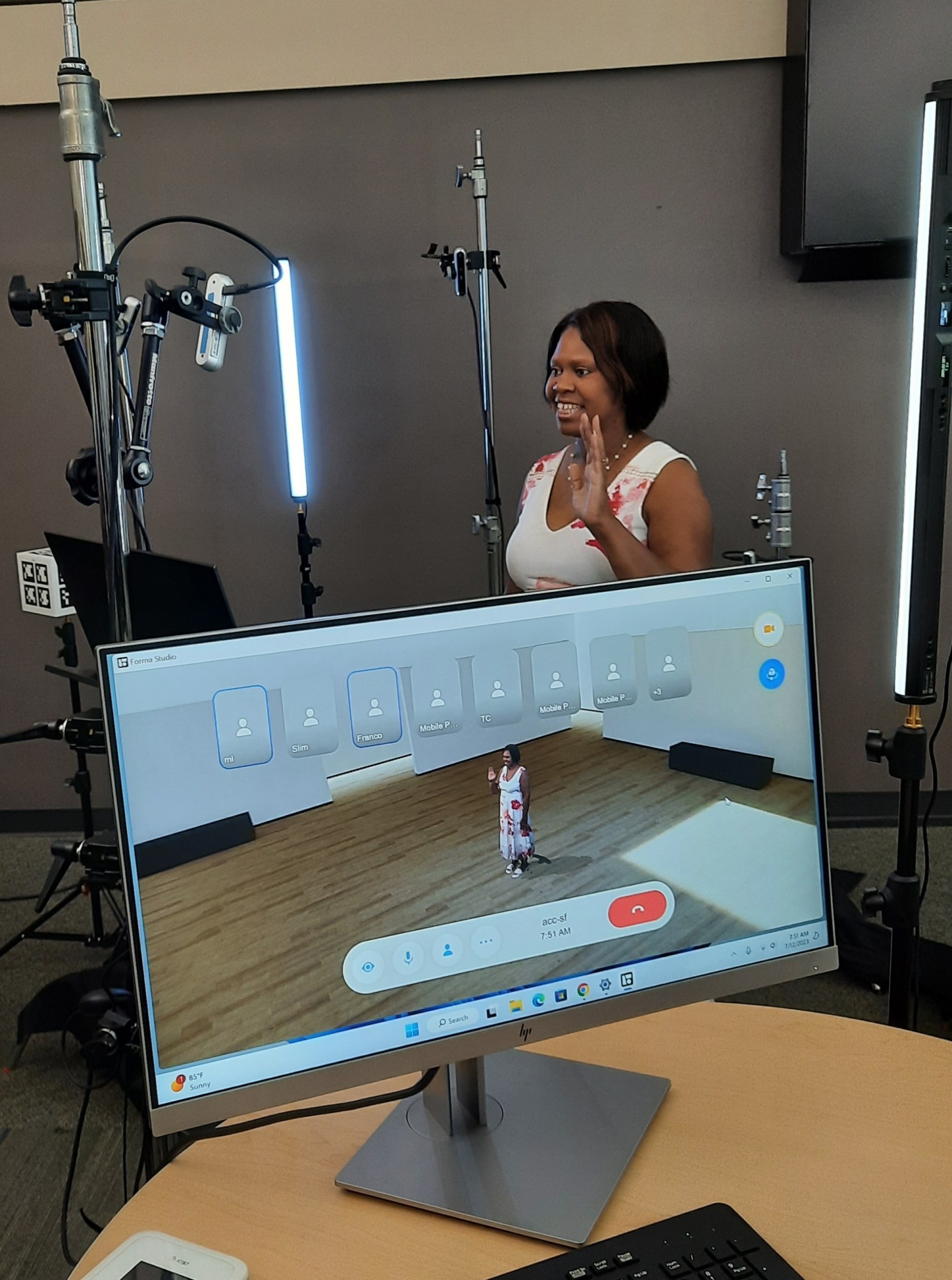
Goddard intern Sean Letavish, from Delaware, said he enjoyed experiencing the extended reality technologies. Letavish has worked with Grubb on the MRET project for three semesters and said the developments show no signs of slowing down.
“I created the ‘blow-up’ animation that separates a satellite into its component parts,” said Letavish, who graduated with a master’s in electrical engineering from George Washington University. “We keep incorporating new capabilities all the time.”
Letavish said he expects his future workspaces will exist both real and virtual worlds. “Everything one can do on [Microsoft] Teams for example could be ported over to a virtual 3D workspace. And with an extra dimension to play with, presentations will change, meetings will change, honestly any kind of virtual collaboration.”
The showcase was organized across directorates by Goddard’s Information Technology and Communications Directorate Chair Matthew Dosberg and web developer Bryan Stephenson.
By Karl B. Hille
NASA’s Goddard Space Flight Center, Greenbelt, Md.









